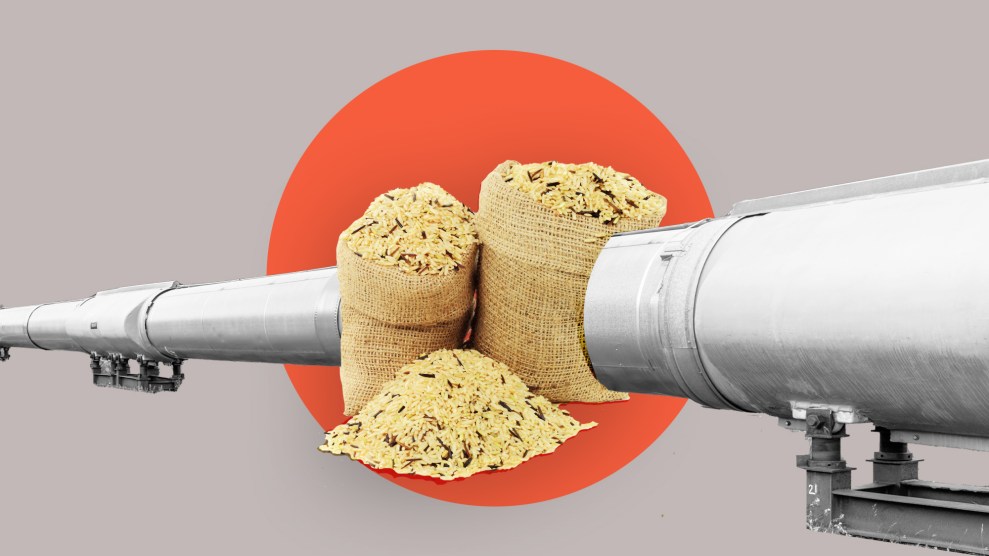1776 A SLAVE MASTERS REVOLT
Expanding Our Understanding of the Revolution
Despite all the controversy it has courted, Woody Holton's newest book doesn't stray very far from other scholarly interpretations of the American Revolution.
Liberty Is Sweet: The Hidden History of the American Revolution, by Woody Holton, Simon & Schuster, 779 pages, $37.50
Even before Woody Holton's Liberty Is Sweet was released, it ignited controversy. Nikole Hannah-Jones, creator of The New York Times' 1619 Project, touted it as evidence that a British threat to slavery provoked the American Revolution. Then Holton, a historian at the University of South Carolina, argued in The Washington Post that "Whites' fury at the British for casting their lot with enslaved people drove many to the fateful step of endorsing independence," prompting six leading historians of the period to respond in a critical open letter.
But the book itself turns out to be much more restrained than either its champions or its detractors have presumed. Though Holton casts occasional aspersions on allegedly standard "myths" about the Revolution, his overall interpretation of the Revolution's causes and consequence doesn't stray very far from other scholarly volumes. Even Gordon Wood, one of the most prominent historians who signed the critical open letter, gives the book a terse but apt jacket blurb: "A spirited account of the Revolution that brings everybody and everything into the story."
Liberty Is Sweet is interesting, densely packed with detail, and exhaustively researched. It is also relentlessly chronological and occasionally disjointed. Its description of the revolt of the Regulators in North Carolina, for example, is broken up across three separate chapters interspersed with his treatment of other events. In covering the major contemporaneous military campaigns that resulted in the British occupation of Philadelphia and the battles near Saratoga in New York, the book jumps back and forth between the two theaters rather than separately treating each in full. Although this approach should pose few problems for those familiar with the period, it may compromise the appeal of Holton's book for a more general audience.
In the first of the book's three distinct sections, Holton addresses the question of slavery's role in motivating the Revolution. The more extreme proponents of this charge invoke the 1772 Somerset court decision in Britain that freed a slave brought from the colonies. But Holton says only that the decision "strengthened the case against the king" for "many slaveholders," and he concedes that other measures "proved equally decisive."
Indeed, by this point his narrative has covered almost a decade of colonial grievances about such measures as the Proclamation of 1763 and the Stamp Act of 1765. Moreover, an endnote backtracks slightly, admitting that while "Somerset angered slaveholders (especially in the Caribbean), there is much less evidence for the corollary contention that one reason white southerners favored secession from Britain in July 1776 was that they feared Britain's growing anti-slavery movement." Holton specifically contradicts the 1619 Project, saying that Hannah-Jones's "claim vastly exaggerates the strength and size of the British abolition movement in 1772."
In the book's second section, covering the war itself, Holton does engage in a bit of a stretch. Half a year after conflict erupted in Massachusetts, the Virginia Assembly effectively governed independently of the royal governor, the earl of Dunmore. Having fled to a British warship, Dunmore issued a proclamation in November 1775 offering freedom to any slaves or indentured servants who would fight for the British. The offer applied only to Virginia slaves and servants, and even then only to those owned by rebels. Holton boldly asserts that "no other document—not even Thomas Paine's Common Sense or the Declaration of Independence—did more than Dunmore's proclamation to convert white residents of Britain's most populous American colony to the cause of independence."
Historians have long recognized that Dunmore's proclamation stiffened resistance in Virginia, especially because it raised the dreaded specter of slave revolts. Robert Middlekauff wrote in 1982 that "whatever loyalty there was in Virginia pretty much flickered out with Dunmore's call." Even Murray Rothbard, in Conceived in Liberty, acknowledged this effect. Notice also that Holton is not claiming that the proclamation sparked the rebellion against Britain—just that it promoted the desire for full independence in Virginia.
On the other hand, the implication that Virginians would have otherwise hesitated about declaring independence seems far too speculative. Holton himself brings up several other factors that propelled the rebels toward a complete separation from the mother country.
A British general, George Clinton, subsequently issued a broader proclamation offering freedom to rebel-owned slaves in all colonies, regardless of whether they fought for the British, again excluding those owned by Loyalists. Holton several times refers to an "Anglo-African alliance," and he scrupulously records nearly every military engagement in which blacks participated. But he does so on both sides of the conflict, writing that "by war's end, some nine thousand African Americans had served in the Whig army and navy—roughly the same number who enlisted with the British." While more than 3,000 emancipated slaves joined the British evacuation from New York at the end of the war, Holton concludes that many of the African Americans who shipped out of British-held Savannah and Charleston likely remained slaves, either handed over to white Loyalists "or snapped up by a British officer," often landing in Britain's Caribbean slave colonies.
Holton gives far greater attention than other general accounts to African Americans during this period, but his discussion of "the emergence of a significant free African American population" in "the post-revolutionary United States" omits one notable contributing factor. He credits Vermont, founded as an independent republic in 1777, with being "first in the modern world to abolish slavery." He also mentions Pennsylvania's adoption of gradual emancipation in 1780 and Massachusetts' 1780 Declaration of Rights, which made it "the first of the original thirteen states to abolish slavery." But he does not mention that the upper-South states of Delaware, Maryland, and Virginia relaxed their restrictions on masters voluntarily freeing their slaves. Virginia's doing so in 1782 resulted in the manumission of an estimated 10,000 slaves over the next decade and a half, more than were freed in Massachusetts by judicial decree.
Liberty Is Sweet offers an equally expansive treatment of Native Americans. It opens with a map delineating the boundaries of the numerous "First Nations" (a Canadian usage Holton frequently employs) east of the Mississippi. Members of these groups, like black Americans, fought on both sides of the conflict, although preponderantly for the British. A third group the book brings to the foreground is women, who crucially supported boycotts of British goods and frugality crusades; launched campaigns to make shirts for the Continental Army; participated in food riots; took over management of farms, plantations, and businesses while their husbands were absent; served as sources of valuable military intelligence; and were often army camp followers, even sometimes fighting alongside the men.
The book's second section is unique in its detailed concentration on military events. Holton covers many minor skirmishes and raids that are often ignored even in purely military histories of the war. And his descriptions are interspersed with telling vignettes about individual participants, conveying better than most accounts how chaotic and savage the conflict could be. It is fairly well known that, until the 20th century, disease regularly killed more soldiers than battle, but Holton's account drives this home. He also gives more attention than usual to resistance against conscription, and he reveals how the 18th century obsession with honor may have motivated commanders on both sides to make otherwise seemingly mistaken decisions. The downside of this heavy concentration on combat is that the book's coverage of wartime politics and finance is comparatively abbreviated.
The third and final section deals with postwar events, extending beyond the Constitution's adoption all the way to the Whiskey Rebellion and the Washington administration's Indian campaigns. Holton's take on the Constitution mirrors his earlier book on the subject, treating it as a counterrevolution "in favor of government." This conclusion is consistent with nearly all recent scholarship, whether specific writers approve of the result or, like Holton, disapprove. The final chapter appropriately deals with the territory lost by the First Nations.
In appraising the Revolution, Holton finds benefits and costs, with a bit more emphasis on the latter, but this is ultimately a glass-half-empty/half-full question. At one point he warns "against any effort to explain the American Revolution in strictly ideological terms," but no serious historian I know of has ever argued that the Revolution was motivated exclusively by ideology, unaffected by economic self-interest, even if ideology was that particular historian's specific interest or topic.
In short, Liberty Is Sweet discusses many facets of the revolutionary era that other general accounts treat less copiously or even ignore. But despite the book's billing as a "hidden history," it does not dramatically overturn the standard interpretations.








